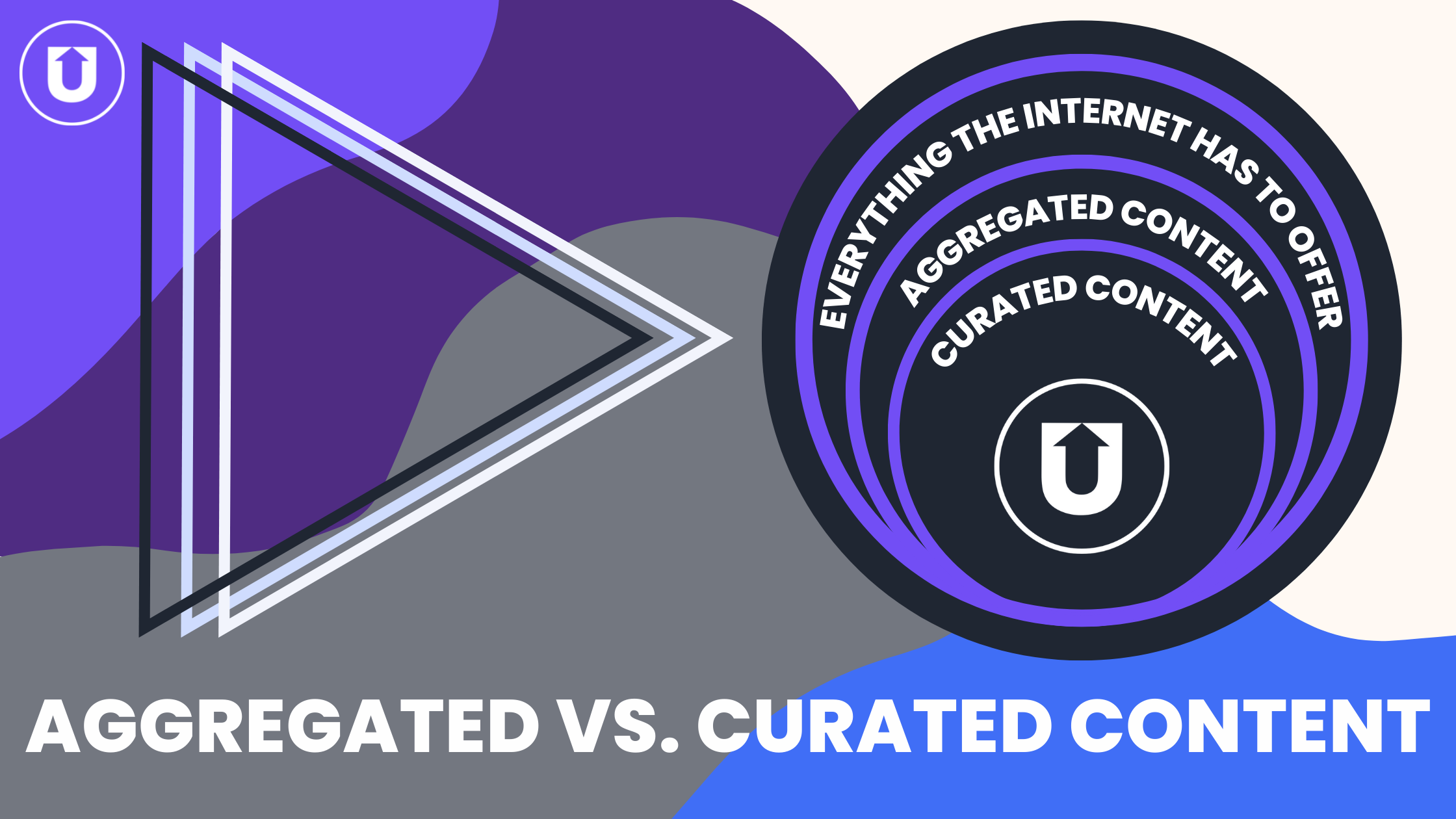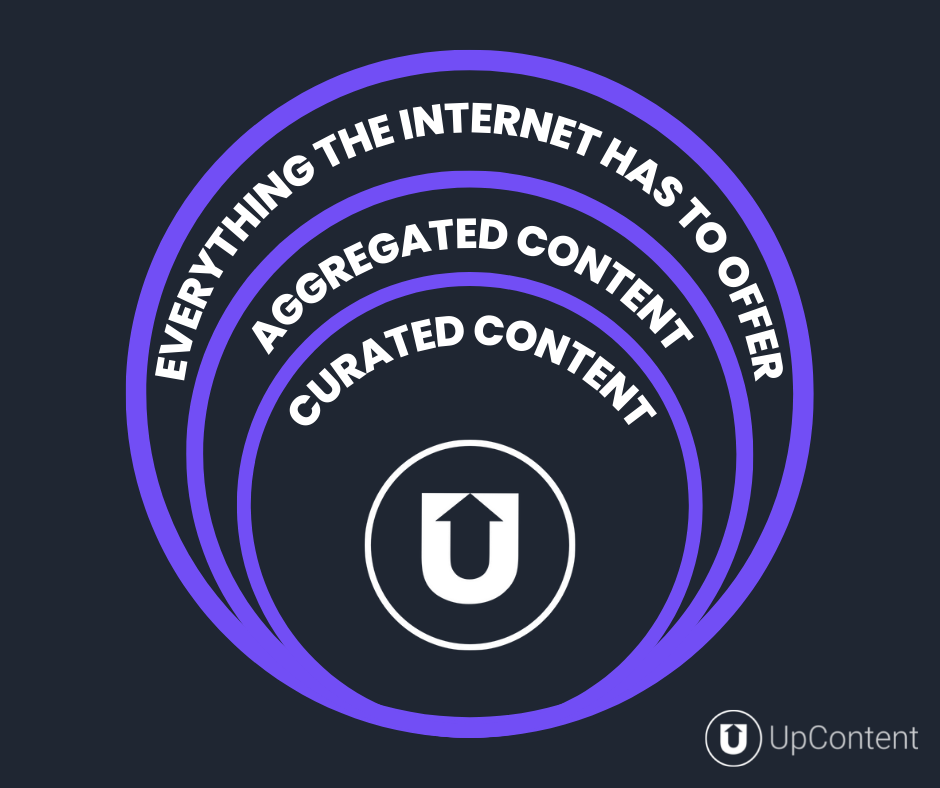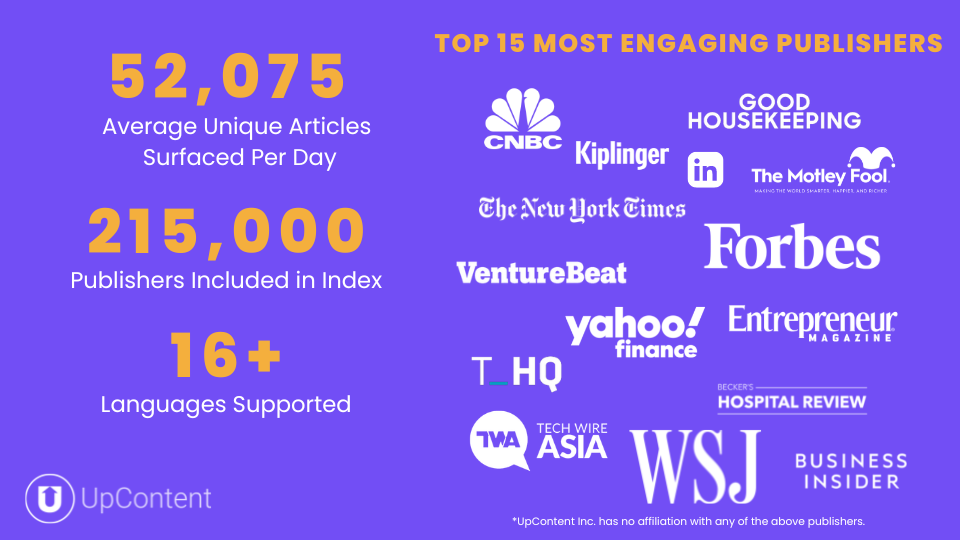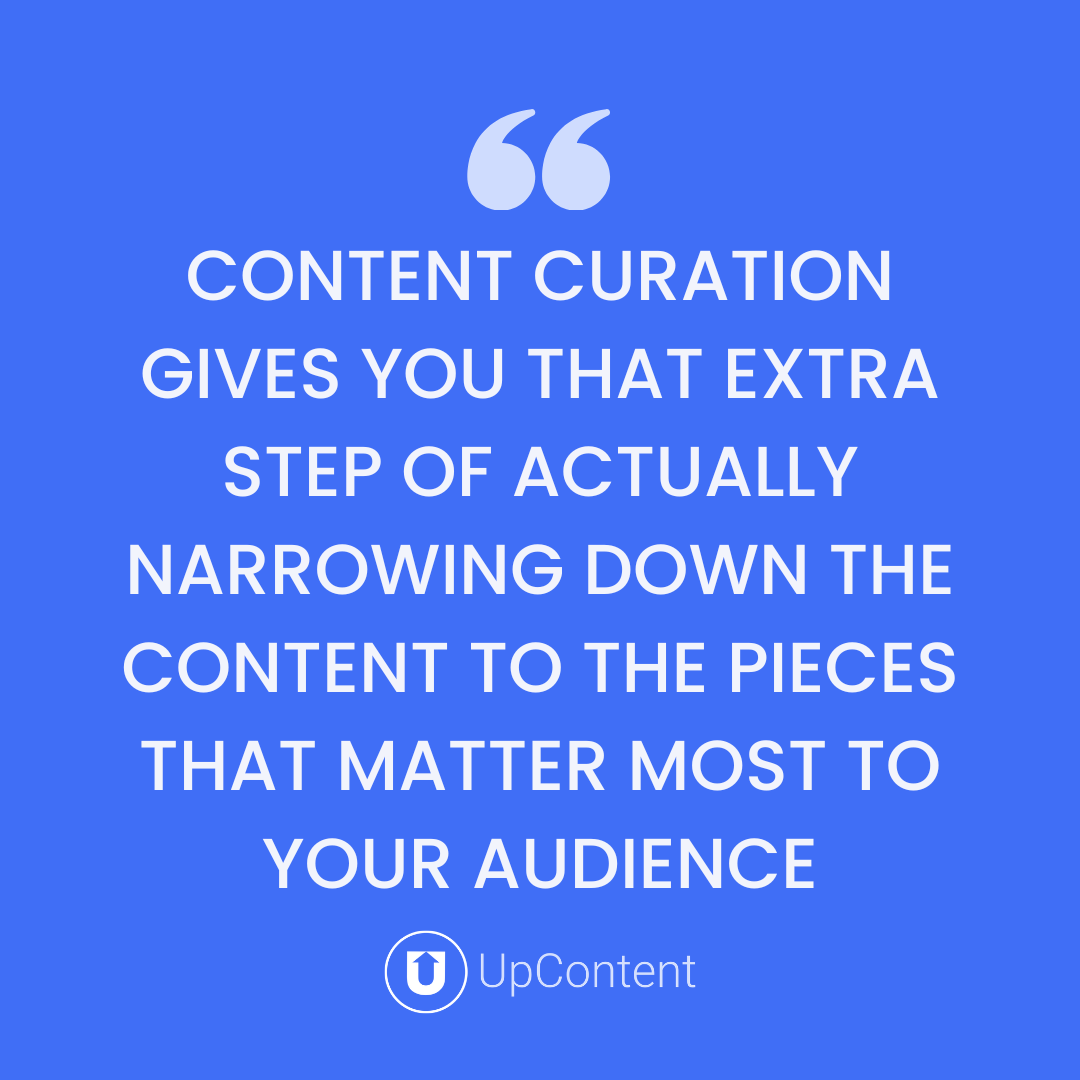What’s the Difference Between Content Curation and Aggregation?

Aren’t content curation and aggregation basically the same thing?
The short answer is no, not really.
Although they are pretty similar, aggregation is technically a part of content curation.
By definition, aggregation means “the formation of a number of things into a cluster,” but curation takes it a step further.
Whereas curation is “the action or process of selecting, organizing, and looking after the items in a collection.”

For years the content industry has viewed content curation as a manual and time-consuming process, but five years ago, we wanted content curation to provide a greater return on the time invested.
That’s how UpContent started, as a solution to automate the elements of the curation process that should be automated in order to surface the most valuable content and minimize the time invested in doing so while leveraging the distribution channels and technologies our customers were already using.
We’ve had hundreds of companies successfully start and manage their content curation strategies!
In this article, we’ll define content aggregation and content curation so you can determine which strategy is best for you.
What is content aggregation?
Aggregation, by definition, means to bring together.
So content aggregation is the bringing together of content.
Usually, it's all content around a specific topic, industry, or publisher.
So an aggregated content feed is essentially one place where someone can see ALL of the content about, let’s say, entrepreneurship or everything published by The New York Times.
This way, your readers, in theory, would never have to go anywhere else because ALL of the information is there, right?
You would become a targeted search engine for people who have landed on your page.
BUT the only requirement for an article to appear in your feed is that it exists, not that it is worth reading.
And what if there’s a great article that a different publisher wrote last week, but your users never see it because the most recently published ones bury it?
Aggregation puts much of the work back on the reader to figure out what is worth consuming.
And when aggregation and RSS feeds were new, our search engines like Google, Yahoo, and Bing weren’t as sophisticated as they are now.
So having all of this information in one spot was SUPER helpful!
But as technology has advanced and searches have become better at predicting context, aggregation alone creates an often overwhelming experience of finding needles in haystacks.
They don’t do as much to cut through the digital noise we all experience.
So does this mean aggregation is an outdated strategy?
Not necessarily.
What is content curation?
Content curation is essentially content aggregation 2.0.
Content curation is selecting and organizing relevant third-party content that relates to your industry or niche and provides context to what you are already saying.
How do you do that?
Traditionally, you would use a search engine like Google or even an aggregation tool to find content from publishers you thought worthy to share.
This is where we would see the distinction between aggregation and curation.
Instead of sharing EVERYTHING you source, you would carefully select the publications you believe your readers would benefit from most.
Then you could send that content out via social media, email, or even link to it on your website.
Content curation helps build trust with your readers by demonstrating that you are open to letting other people share their expertise on the same topic you also are an expert in.
By providing this information, you are also educating your readers on your approach to addressing these challenges.
While your first thought may be, “Won’t my potential customers leave and buy from someone else then?”
People research so much more than they used to before making a purchase decision.
Nearly 70% of the buyer’s decision is made before they even contact your company.
So why not bring them all the information they would be reading in a carefully curated, convenient location, making you the last touch point in their mind as the expert?
If they don’t get it from you, they will find the answers they need elsewhere.
^^^This is why curation is important.^^^
Aggregation in 2022
There are aggregation tools like Feedly, Pocket, or even Google News, where you can access and organize the content about your topic area or group articles from your favorite publishers.
And you, as the internal person, can see all of the content from all your favorite sources in a dashboard of sorts or even expose this to others.
So instead of going to eight different aggregated sites to find this content, you can just go to this one spot, and everything you want is there.
But usually, this starts with what publications you want to review and when these are entered will respond with every article from this publisher or only the articles from those publishers that match specific terms.
Sounds like a good way to see everything discussing what you care about, right? For the most part, yeah.
Aggregation is a great way to keep your “fingers on the pulse” of what’s being discussed in the areas of the internet that you frequent most.
But what about those times when another publisher happens to do a feature on your topic area?
Wouldn’t it be great to identify that piece as well as get it to your audience in order to spark a conversation or share these insights that they are less likely to have already discovered on their own?
These are the publications you likely wouldn’t have added to your “publisher list” as their focus on your topic of interest is rather rare - so how can you discover these pieces as well without overwhelming your aggregator results with irrelevant content?
UpContent: Making Content Curation Automated (When it Should Be)
UpContent is a content curation tool that “aggregates” content that matches the requirements you set within your Topics.
But one of the key differences between aggregators and our approach is that there is no limit to the number of articles or publishers you can source content from!

Even if you could have 215,000 publishers in your aggregator tool, can you imagine the amount of content you would have to manually sort through?
Here at UpContent, we wanted to make that sorting process as automatic as possible so you can curate the best content for your audience from the best possible selection.
Curation should almost always have some sort of “manual” element because that’s what showcases your perspective to your audience.
But that doesn’t mean that the “manual” part should take as long as creation or be as painful as moving through what has been simply aggregated.
Using a content curation tool like UpContent can automate the discovery and distribution of your carefully selected content to minimize the decision fatigue of both yourself and your audience!
Choosing which articles you want to share on social media, your website, or emails can be automatically organized into Collections that will send those articles where they need to go in a single click!
Which Should You Choose - Aggregation or Curation?
While content aggregation and curation can seem similar, the differences have huge implications on how well the content you share is received.
A big distinction between the two is that aggregation is just going to give you one place to have everything.
Whereas the curation side, whether you're using it to serve an internal or external audience, content curation gives you that extra step of narrowing down the content to the pieces that matter most to your audience.
It brings all those needles to the top of the haystack for you to find the ones that best fit your needs.

If you’re interested in how content curation can help your content marketing efforts, schedule a call with one of our Content Curation Experts today!
Or, if you’d like to research on your own a little more, check out some of these articles.



